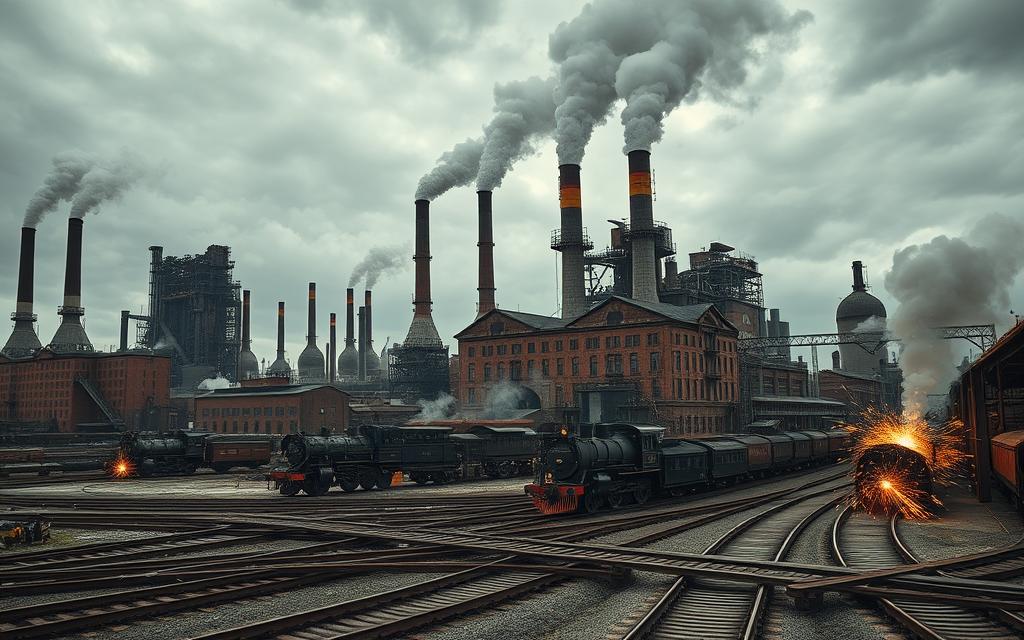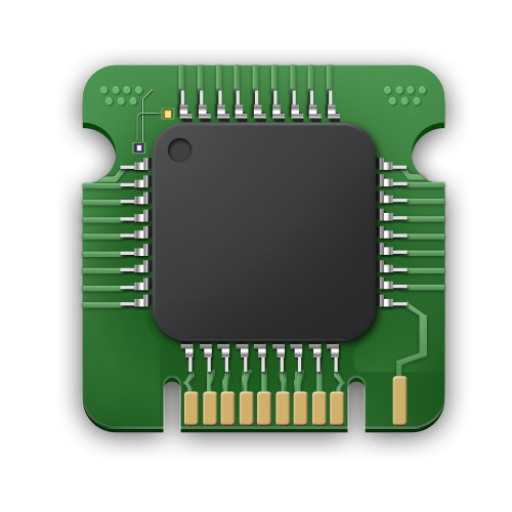Technology represents the application of conceptual knowledge to achieve practical goals in a reproducible manner. It encompasses both tangible tools and intangible systems, playing a critical role in science, engineering, and daily life.
The term “technology” refers to the products resulting from such efforts, highlighting its role in shaping human civilization. From prehistoric stone tools to modern digital systems, technology has evolved significantly, transforming society through key innovations.
By examining the practical application of knowledge and its manifestation as both physical products and intangible systems, we can understand technology‘s multifaceted nature and its impact on our daily lives.
The Concept of Technology: A Comprehensive Definition
The concept of technology is multifaceted, involving both tangible products and intangible processes. At its core, technology represents the application of knowledge to achieve practical goals and solve real-world problems.
Technology as Applied Knowledge
Technology is fundamentally about the use of knowledge to create things that didn’t exist before or to improve existing processes. This application of knowledge can result in original innovations that transform industries or daily life. For instance, the development of the internet was an original technological advancement that revolutionized global communication.
The aspect of technology as applied knowledge highlights its role in extending human capabilities. By leveraging scientific discoveries and engineering principles, technology enables us to achieve more than would be possible through human effort alone.
Technology as Products and Processes
Technology also refers to the products resulting from such efforts, including both tangible tools like utensils or machines and intangible ones like software. These products and processes exist on a spectrum from purely physical tools to completely digital systems.
The distinction between technology as a process (knowing how to do something) and as a product (the tools created through that knowledge) is crucial. Understanding this dual nature helps clarify how original technological advancements can have far-reaching impacts across various aspects of society.
Etymology and Origin of the Term “Technology”
The etymology of “technology” is deeply rooted in the Greek language, reflecting the cultural and intellectual achievements of the time. The term is a combination of two Greek words: “techne” and “logos.”
Greek Origins: Techne and Logos
The word “techne” refers to art, skill, or craft, representing the practical application of knowledge. “Logos,” on the other hand, means word, reason, or discourse, signifying the study or science of a subject. Together, “technology” originally meant the systematic treatment of an art or craft, or the study of the methods and principles used in a particular skill or trade. This original definition highlights the importance of both practical knowledge and theoretical understanding.
Evolution of the Term Through History
Over time, the concept of technology evolved significantly. Starting in the 19th century, continental Europeans began using terms like “Technik” (German) or “technique” (French) to describe a ‘way of doing’ that encompassed various technical arts. At the same time, “Technologie” referred to the academic study of the “methods of arts and crafts” or the political discipline aimed at legislating on the functions of arts and crafts. This evolution reflects how the understanding of technology expanded to include both the practical application of knowledge and the study of techniques.
| Period | Term Used | Meaning |
|---|---|---|
| Ancient Greece | Techne & Logos | Systematic treatment of art or craft |
| 19th Century Europe | Technik/Technique | Way of doing; technical arts |
| 19th Century Europe | Technologie | Study of methods of arts and crafts |
The original Greek roots and the subsequent evolution of the term highlight the dynamic nature of technology. Today, the term encompasses a broad range of disciplines and is recognized as a driving force in modern society. As we examine the history and development of technology, it’s clear that its original meaning has expanded to include complex systems and theoretical frameworks, making it a vital part of contemporary life, discussed in various articles and studies.
What Technology Is: Core Characteristics
At its core, technology represents the application of knowledge to achieve practical objectives. This definition encapsulates the essence of technology as a tool for progress and innovation.
Purposeful Application of Knowledge
Technology involves the original application of conceptual knowledge to achieve specific, practical goals. This characteristic underscores the intentional nature of technological development.
The use of knowledge in technology is deliberate, aiming to address real-world challenges through innovative solutions.
Reproducibility and Scalability
A key feature of technology is its ability to be reproduced and scaled. This allows for the widespread adoption of technological innovations, making them accessible to a broader audience.
Reproducibility is crucial for the validation and refinement of technological advancements, enabling continuous improvement in various ways.
Problem-Solving Nature
The development of technology is often driven by the need to solve complex problems or overcome limitations. This problem-solving orientation is fundamental to the nature of technology.
Through an iterative process of innovation and refinement, original solutions emerge, addressing challenges in novel original ways. These solutions are then refined and improved upon, leading to further technological advancements.
The Prehistoric Foundations of Technology
The prehistoric foundations of technology are rooted in the early innovations of our ancestors. During this era, early humans developed crucial technologies that enabled them to adapt to their environments and expand their geographical range.
Stone Tools and Early Human Innovation
The development of stone tools marked one of the earliest technological advancements. These tools, fashioned from stones and rocks, were used for a variety of tasks, including hunting and processing food. The creation and use of stone tools demonstrate early human ingenuity and the ability to manipulate their environment.
The Discovery of Fire: A Technological Revolution
The discovery of fire was a significant technological breakthrough. Fire provided warmth, enabled the cooking of food, and offered protection from predators. This innovation had a profound impact on the lives of early people, improving their quality of life and facilitating further technological advancements.
Clothing and Shelter Development
Other original technologies developed during the Paleolithic era include clothing and shelter. Archaeological evidence suggests that clothing emerged between 90-120 thousand years ago, while shelter construction dates back to around 450 thousand years ago. As the era progressed, dwellings became more sophisticated, with evidence of temporary wood huts as early as 380 thousand years ago.
| Technological Advance | Approximate Timeframe | Impact |
|---|---|---|
| Stone Tools | Early Paleolithic | Enabled hunting and food processing |
| Fire Discovery | Early Paleolithic | Provided warmth, cooked food, and protection |
| Clothing | 90-120 kya | Allowed for migration to colder climates |
| Shelter | 450 kya | Offered protection from elements |
These original technologies, developed thousands of years ago, laid the foundation for future innovations. They demonstrate the resourcefulness of early people and their ability to adapt to diverse environments, ultimately shaping the course of human history.

Agricultural Revolution and Early Civilizations
The transition from nomadic hunter-gatherer societies to settled agricultural communities marked a pivotal moment in human history. As people began to cultivate crops and domesticate animals, they created the foundation for the emergence of complex societies.
Neolithic Innovations and Farming Tools
The Neolithic period saw original innovations in farming tools, which significantly improved agricultural productivity. Early farmers developed tools such as the plow, made from wood and later from metal, to till the soil. The invention of irrigation systems allowed for more controlled water supply, enabling crops to thrive in areas with limited rainfall.
These original farming techniques and tools facilitated the production of surplus food, which in turn supported population growth and the development of more complex social structures. The technologies developed during this period laid the groundwork for the rise of early civilizations.
Early Urban Technologies and Writing
As agricultural surpluses grew, so did the size and complexity of settlements, eventually giving rise to the first cities. Early urban technologies included water management systems, defensive structures, and public buildings, which made concentrated population centers possible. The development of writing systems was a crucial original innovation that enabled the recording of laws, business transactions, and cultural knowledge.
Writing facilitated the administration of complex societies and allowed for the transmission of cultural heritage across generations. The emergence of specialized labor and social hierarchies also characterized these early urban centers, setting the stage for the continued evolution of human societies.
| Technological Advancement | Impact on Society |
|---|---|
| Agricultural Tools | Increased food production, supporting population growth |
| Irrigation Systems | Enabled controlled water supply, expanding cultivable land |
| Writing Systems | Facilitated administration, knowledge preservation, and cultural transmission |
Ancient Technological Achievements
The ingenuity of ancient cultures is reflected in their original technological achievements. These advancements not only showcased their creativity but also laid the foundation for future innovations.
The Invention of the Wheel
The invention of the wheel is considered one of the most significant original technological breakthroughs in human history. It revolutionized transportation and had a profound impact on the development of civilizations. The wheel enabled the creation of more efficient tools and machinery, facilitating trade and cultural exchange.
Early Transportation and Road Systems
The development of early transportation systems, including roads and chariots, was a crucial original achievement. Ancient civilizations constructed extensive road networks that facilitated trade, communication, and the movement of armies. These early transportation systems played a vital role in shaping the course of history.
Water Management and Sanitation
Ancient civilizations also made significant advancements in water management and sanitation technologies. The ancient Minoans, for example, had sophisticated plumbing systems, with private homes featuring running water and flushing toilets. The ancient Romans built upon these innovations, constructing extensive aqueducts and sewage systems, including the Cloaca Maxima, which was begun in the sixth century bce and remains in use today.
Medieval and Renaissance Technological Progress
The medieval period saw significant technological advancements that laid the groundwork for future innovations. During this time, original technologies emerged, transforming various aspects of society. These advancements were not limited to a single area but spanned multiple fields, including mechanics, printing, and more.
Simple Machines and Mechanical Innovations
Simple machines, such as the pulley, lever, and inclined plane, were crucial during the medieval period. These machines were used in various applications, from construction to agriculture, significantly improving productivity. Mechanical innovations, including waterwheels and windmills, harnessed natural resources to perform tasks, reducing the reliance on manual labor. The introduction of these technologies marked an original approach to problem-solving, showcasing human ingenuity.
- The use of simple machines in construction enabled the building of larger, more complex structures.
- Mechanical innovations like waterwheels and windmills increased productivity in agriculture and industry.
The Printing Press and Knowledge Dissemination
The invention of the printing press by Gutenberg in the 15th century revolutionized the dissemination of knowledge among people. This printing press technology allowed for mass production of books, making written knowledge more accessible. The impact was profound, democratizing access to information that was previously restricted to elites. The printing press is an exemplary model of how technologies can trigger significant social changes.
- The printing press facilitated the spread of ideas during the Renaissance.
- It enabled the standardization of languages and the reliable reproduction of texts and images.
- The technology played a crucial role in the scientific revolution by making scientific knowledge widely available.
The technological advancements during the medieval and Renaissance periods were truly original, laying the foundation for future innovations. These developments not only improved productivity but also had a lasting impact on society, culture, and the dissemination of knowledge.
Industrial Revolution: The Great Technological Shift
The advent of the Industrial Revolution signaled a major departure from traditional craftsmanship to more mechanized and efficient forms of production. This period marked a significant transformation in the way goods were manufactured, consumed, and distributed, laying the groundwork for modern industrial society.
Steam Power and Manufacturing
The introduction of steam power was a pivotal moment in the Industrial Revolution. It enabled the mechanization of factories and significantly increased production capacity. Steam-powered machinery replaced manual labor in many industries, leading to increased efficiency and productivity. This technological advancement was original in its ability to transform the manufacturing landscape.
The impact of steam power on manufacturing was multifaceted. It allowed for the development of more complex machinery and facilitated the growth of factories. As a result, production costs decreased, and goods became more widely available. The technologies developed during this period, including steam engines, played a crucial role in shaping the future of manufacturing.

Mass Production and Assembly Lines
The Industrial Revolution also saw the introduction of mass production techniques, most notably the assembly line. Henry Ford’s innovative use of the assembly line in the early 20th century revolutionized the production of automobiles. By breaking down the manufacturing process into a series of standardized tasks, Ford was able to significantly reduce production time and costs.
The assembly line was a groundbreaking original technology that transformed the manufacturing process. It enabled the production of complex goods on a large scale, making them more accessible to the general public. The success of the assembly line in the automotive industry led to its adoption in other sectors, further accelerating the growth of mass production.
The combination of steam power and mass production techniques during the Industrial Revolution laid the foundation for modern manufacturing. These technologies not only increased productivity but also democratized access to goods, fundamentally altering consumption patterns and material culture across society.
Modern Technology in the 20th Century
The 20th century witnessed unprecedented technological advancements that transformed the world. This era saw significant breakthroughs in various fields, including electronics, computing, space exploration, and nuclear technology.
Electronics and Computing Revolution
The 20th century was marked by an original revolution in electronics and computing. The invention of the transistor and the development of the microprocessor led to the creation of personal computers, which became an integral part of daily life. This technological leap enabled rapid processing of information and facilitated global communication. The impact of these technologies was felt across various industries, from healthcare to finance.
The development of the internet further amplified the effects of the computing revolution, allowing for global connectivity and information exchange on an unprecedented scale. As a result, the world became more interconnected, and the way people lived and worked was forever changed.
Space Age and Nuclear Technology
The mid-20th century saw the dawn of the Space Age, with the Soviet Union launching the first artificial satellite, Sputnik, into orbit around the Earth in 1957. This achievement marked the beginning of a new era in space exploration, with the United States and the Soviet Union engaging in a powerful space race. The successful landing of humans on the Moon in 1969 was a testament to the rapid progress made in rocket technology, which carried original designs that enabled space travel.
Parallel to the advancements in space technology, scientists made significant breakthroughs in harnessing energy from nuclear reactions. The discovery of nuclear power led to the development of atomic bombs during World War II, and later, to the use of nuclear energy for generating electricity. These original technologies represented a major shift in humanity’s ability to harness fundamental forces of nature.
Digital Transformation and the Information Age
With the rise of the internet and mobile technologies, the way people live, work, and interact has undergone a radical change. The digital transformation has revolutionized the way information is accessed and shared, making it a cornerstone of modern life.
Internet and Communication Technologies
The advent of the internet has been a pivotal moment in the history of technologies. It has enabled rapid communication and information exchange on a global scale. The development of optical fiber and optical amplifiers has facilitated fast and reliable long-distance communication, ushering in the Information Age. As stated by a renowned expert, “The internet is the first thing that humanity has built that humanity doesn’t understand, the largest experiment in anarchy that we have ever had.” This highlights the profound impact of the internet on modern society.
| Technology | Impact |
|---|---|
| Optical Fiber | Enabled fast data transmission |
| Internet | Global information exchange |
Mobile and Smart Technologies
The miniaturization of computing technology has led to the development of mobile devices that are original in their design and functionality. These devices have transformed technology use from being location-bound to being personal and portable. The evolution from early mobile phones to sophisticated smartphones has integrated computing, communication, sensing, and media capabilities into pocket-sized devices, significantly impacting people’s daily lives.
- Wireless technologies like Wi-Fi and Bluetooth have enabled continuous connectivity.
- Mobile platforms have created new ecosystems of applications and services.
- Smart technologies have altered daily routines and social interactions.

The digital transformation has brought about original ways of interacting with technology, making it an integral part of daily life. As we continue to embrace these advancements, it’s crucial to understand their impact on society and the economy.
Categories of Modern Technology
Modern technology is broadly categorized into various fields, each playing a crucial role in shaping our world. The classification of these technologies highlights their diversity and the breadth of their applications.
Information Technology
Information Technology (IT) encompasses the use of computers, software, and networks to manage and process information. IT has revolutionized the way we communicate, work, and access information. Original innovations in IT have led to the development of the internet, cloud computing, and cybersecurity measures.
Medical and Biotechnology
Medical and Biotechnology involve the application of technological advancements to improve healthcare and medical research. This category includes the development of new medical devices, diagnostic tools, and treatments. Original research in biotechnology has led to breakthroughs in genetic engineering and regenerative medicine.
“The integration of technology in healthcare has transformed patient care and medical research, offering new hope for curing diseases.”
Energy and Environmental Technology
Energy and Environmental Technology focus on developing sustainable solutions to meet our power needs while minimizing environmental impact. This includes advancements in solar, wind, and hydroelectric energy. The development of smart grids and energy storage solutions is transforming the way we distribute and consume energy.
| Technology | Description | Impact |
|---|---|---|
| Solar Energy | Harnesses sunlight to produce electricity | Reduces reliance on fossil fuels |
| Wind Energy | Converts wind kinetic energy into electricity | Decreases carbon emissions |
| Hydroelectric Power | Generates electricity from water flow | Provides renewable energy source |
The development of these technologies represents a critical step towards addressing global challenges such as climate change and resource depletion, showcasing technology’s dual role in both creating and solving environmental problems.
Economic Impact of Technology
Technology has been a driving force behind economic growth, transforming the way people live and work. Since the invention of the wheel, technologies have helped increase humans’ economic output. The impact of technology on the economy is multifaceted, with both positive and negative effects.
Technology as a Driver of Economic Growth
Technology has been a key driver of economic growth throughout history, from the Industrial Revolution to the present day. For example, the introduction of steam power and mechanization during the Industrial Revolution significantly boosted productivity and economic output. In modern times, technological advancements in fields like information technology and biotechnology continue to drive economic growth, creating new opportunities and industries. As noted in a report by Research FDI, technology is changing the landscape of economic development, enabling countries to leapfrog traditional stages of growth.
| Technological Advancement | Economic Impact |
|---|---|
| Steam Power | Increased productivity and economic output |
| Information Technology | Creation of new industries and job opportunities |
| Biotechnology | Advancements in healthcare and agriculture |
Technological Unemployment and Job Creation
While technology has created new opportunities, it has also led to job displacement in certain sectors. The introduction of automation and artificial intelligence has raised concerns about original job losses. However, history has shown that while technology can substitute certain jobs, it also creates new ones. For instance, the rise of computers led to the creation of entirely new industries and job categories that did not exist before. As technology continues to evolve, it is likely to create new original opportunities that we cannot yet anticipate. The challenge lies in ensuring that workers have the skills needed to adapt to these changes.

The debate around technological unemployment versus job creation continues, with some arguing that the current pace of technological change is original in its scope and speed. As we move forward, it is crucial to monitor these trends and develop policies that support workers in adapting to the changing job market.
Social Impact of Technology
Technology’s influence on society is multifaceted, affecting various aspects of human interaction and well-being. Recent years have seen a significant rise in social media’s cultural prominence, with far-reaching implications for democracy, economic life, and social structures. As original technologies continue to emerge, they play an increasingly important part in shaping our lives.
Changes in Communication and Social Interaction
The way people communicate has undergone a substantial transformation due to technological advancements. Social media platforms have become integral to daily life, changing how individuals interact and share information. This shift has both positive and negative consequences, including the spread of disinformation and the amplification of diverse voices.
- The rise of social media has altered traditional communication patterns.
- Technologies have enabled new forms of social interaction, both online and offline.
Technology and Quality of Life
Technological innovations have significantly impacted daily life, health outcomes, and overall well-being across societies. Household technologies have reduced physical labor, altering time use patterns and domestic roles. Medical technologies have improved longevity and disease management, though access disparities remain a challenge. These advancements are original in their approach and have been original in their impact.
| Technology | Impact on Daily Life | Impact on Health Outcomes |
|---|---|---|
| Household Technologies | Reduced physical labor, changed domestic roles | Improved quality of life |
| Medical Technologies | Enhanced health care delivery | Improved longevity, better disease management |
Environmental Considerations of Technology
Understanding the environmental implications of technological development is essential for sustainable progress. While technology contributes to economic development and improves human prosperity, it can also have negative impacts like pollution and resource depletion.
Pollution and Resource Depletion
Technological advancements have led to increased consumption of natural resources and generation of waste. The extraction and processing of raw materials result in environmental degradation, affecting water quality and availability. For instance, the production of electronics requires significant amounts of water and energy, contributing to resource depletion.
| Resource | Impact | Mitigation Strategy |
|---|---|---|
| Water | Pollution from industrial waste | Implementing water recycling systems |
| Energy | Depletion of fossil fuels | Transitioning to renewable energy sources |
Sustainable Technologies and Solutions
In response to environmental challenges, technological innovation is increasingly focused on developing sustainable systems. Clean energy technologies, such as solar and wind power, are being advanced to reduce carbon emissions. The emergence of circular economy approaches is also noteworthy, as it enables material recovery and waste reduction through technologies that extend product lifecycles.

Information technologies play a crucial role in supporting environmental sustainability by improving monitoring, optimization, and resource management. These advancements represent a shift in innovation priorities, aligning technological development with ecological principles.
“The greatest shortcoming of the human race is our inability to understand the exponential function.” –
This shift towards sustainability is original and pivotal in addressing environmental concerns. As we move forward, it’s essential to continue developing technologies that support environmental sustainability.
The Future of Technology
Emerging technologies are set to revolutionize various aspects of our lives. As we progress, new technologies are being developed that promise to transform industries and improve the human experience.
Emerging Technologies and Trends
The rapid advancement in fields like artificial intelligence, biotechnology, and renewable energy is creating new opportunities for growth and innovation. For instance, AI is being integrated into healthcare to provide more personalized and efficient care. Biotechnology is also making significant strides, with gene editing technologies like CRISPR offering potential cures for previously incurable diseases.
Ethical Considerations and Challenges
As new technologies emerge, they bring with them ethical considerations and challenges. Issues such as privacy, autonomy, and equity are at the forefront of debates about the use of technologies like surveillance systems and genetic engineering. It’s crucial that we develop frameworks that address these concerns, ensuring that technological advancements benefit society as a whole.
The development of original and innovative solutions requires not just technical expertise but also ethical deliberation and diverse perspectives. By considering the potential impacts of new technologies on people and the environment, we can work towards creating a future where technology serves to enhance our lives without compromising our values or the planet.
Conclusion
In conclusion, technology stands as a testament to human innovation and applied knowledge. From prehistoric tools to modern digital systems, technology has evolved, driven by science and human ingenuity, creating something original. Its impacts on economic, social, and environmental systems are multifaceted, bringing both benefits and challenges. Understanding technology requires recognizing it as a complex socio-technical system. Future development must balance technical innovation with ethical wisdom, inclusive governance, and sustainable principles, ensuring that science and technology serve human flourishing.







